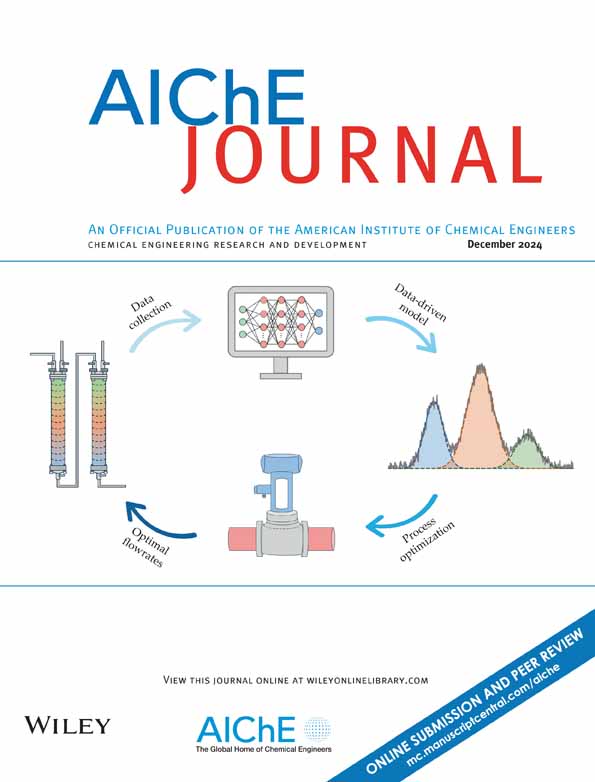Multiphysics and multizone modeling of electrically switched ion exchange with self-driven adsorption for Li+ extraction
IF 3.5
3区 工程技术
Q2 ENGINEERING, CHEMICAL
引用次数: 0
Abstract
Electrically switched ion exchange (ESIX) is a promising approach for extracting Li+ from brines with high Mg/Li ratios. However, the effect of operating conditions and film electrode parameters on electrochemical performance remains unclear. Herein, a dynamic multiphysics and multizone model was developed to describe the ESIX process with self-driven adsorption, using an LMO/PPy electrode pair for ion and charge transport. The results revealed that a flow velocity of 0.0125 m/s and a PPy/LMO mass ratio of 15:1 can effectively reduce Li+ concentration polarization and activate electroactive sites, respectively. Additionally, the high solid volume fraction of LMO particles increases the concentration difference of electroactive sites, thereby enhancing Li+ extraction performance. Meanwhile, low currents (≤25 mA/g) narrow the gap between the interfacial exchange current and the applied current, hence improving Li+ extraction efficiency. This model serves as an efficient in-silico tool for designing and optimizing electrochemical Li+ extraction processes.求助全文
约1分钟内获得全文
求助全文
来源期刊

AIChE Journal
工程技术-工程:化工
CiteScore
7.10
自引率
10.80%
发文量
411
审稿时长
3.6 months
期刊介绍:
The AIChE Journal is the premier research monthly in chemical engineering and related fields. This peer-reviewed and broad-based journal reports on the most important and latest technological advances in core areas of chemical engineering as well as in other relevant engineering disciplines. To keep abreast with the progressive outlook of the profession, the Journal has been expanding the scope of its editorial contents to include such fast developing areas as biotechnology, electrochemical engineering, and environmental engineering.
The AIChE Journal is indeed the global communications vehicle for the world-renowned researchers to exchange top-notch research findings with one another. Subscribing to the AIChE Journal is like having immediate access to nine topical journals in the field.
Articles are categorized according to the following topical areas:
Biomolecular Engineering, Bioengineering, Biochemicals, Biofuels, and Food
Inorganic Materials: Synthesis and Processing
Particle Technology and Fluidization
Process Systems Engineering
Reaction Engineering, Kinetics and Catalysis
Separations: Materials, Devices and Processes
Soft Materials: Synthesis, Processing and Products
Thermodynamics and Molecular-Scale Phenomena
Transport Phenomena and Fluid Mechanics.
 求助内容:
求助内容: 应助结果提醒方式:
应助结果提醒方式:


